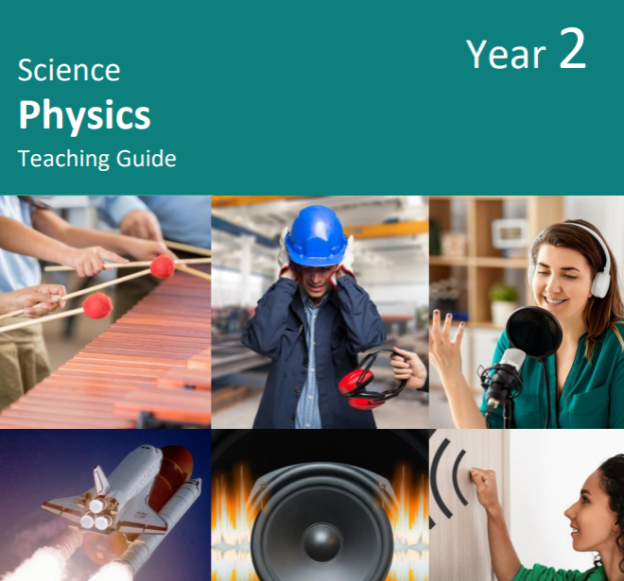Physics – Year 2
Oz-e-Science

Extra Resources
Physics Year 2 is the study of what things are made of, how they move and how they get energy. It aligns to the Australian Curriculum Science Understanding:
- ‘Explore different actions to make sounds and how to make a variety of sounds, and recognise that sound energy causes objects to vibrate (AC9S2U02)’
Success Criteria
- Explain how force applied to materials creates sound.
- Show how force on materials makes sound.
- Explain how movement (kinetic energy) converts into sound energy.
- Observe how movement (kinetic energy) converts into sound energy.
- Describe how different materials vibrate to produce sound.
- Observe how different materials vibrate to produce sound.
- Describe how sound waves travel through different mediums.
- Investigate how sound waves travel through solids.
- Explain that humans sense sound through hearing and feeling.
- Investigate sensing sound through hearing and touch.
- Explain sound intensity and its measurement.
- Investigate sound intensity and its measurement.
- Explain the difference between noise and music.
- Identify pitch variations.
- Explain how sound is sometimes absorbed or reflected.
- Explain how sound is sometimes absorbed or reflected.
- Recall what we have learned about sound in this Unit.
Learning objectives
In lessons 1 to 10, students learn about:
- how force applied to materials creates sound.
- how movement (kinetic energy) converts into sound energy.
- that vibrations of materials create sound waves.
- how sound waves travel through different mediums.
- how we sense sound through hearing and feeling.
- sound intensity and its measurement.
- the sound of music.
- how sound is sometimes absorbed and sometimes reflected by certain materials.
- the speed of sound.
Assessment
End-of-Unit Assessment
The last lesson is the End-of-Unit Assessment which has a variety of question formats (e.g., label the diagram, circle the correct answer) to assess student mastery of content from the unit.
The End-of-Unit Assessment is in the Teaching Guide. Teachers copy the assessment and distribute to students at testing time.


